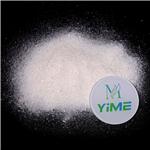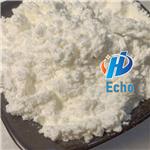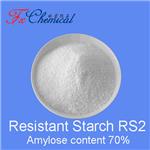Starch
- CAS No.
- 9005-25-8
- Chemical Name:
- Starch
- Synonyms
- STARCH INDICATOR SOLUTION;STARCH INDICATOR;ZEA MAYS (CORN) STARCH;tapon;POTATO STARCH pure;ORYZA SATIVA (RICE) STARCH;w-gum;Strke;hrw13;trogum
- CBNumber:
- CB8349543
- Molecular Formula:
- (C6H10O5)n
- Molecular Weight:
- 0
- MDL Number:
- MFCD00132834
- MOL File:
- Mol file
| Melting point | 256-258°C |
|---|---|
| Density | 1.5 |
| storage temp. | Store at 2-8°C |
| solubility | H2O: 20 mg/mL, colorless, clear to slightly turbid |
| form | Solution |
| color | White |
| PH | 4-7 (100g/l, H2O, 25℃)(slurry) |
| Substances Added to Food (formerly EAFUS) | STARCH, UNMODIFIED |
| FDA 21 CFR | 184.1366 |
| EWG's Food Scores | 1 |
| NCI Dictionary of Cancer Terms | starch |
| FDA UNII |
STARCH, TAPIOCA (24SC3U704I) STARCH, POTATO (8I089SAH3T) STARCH, RICE (4DGK8B7I3S) STARCH, WHEAT (79QS2MG2LP) STARCH, OAT (904CE6697V) |
| EPA Substance Registry System | Starch (9005-25-8) |
| Cosmetics Info | Zea Mays (Corn) Starch |
SAFETY
Risk and Safety Statements
| Symbol(GHS) |  GHS07 |
|||||||||
|---|---|---|---|---|---|---|---|---|---|---|
| Signal word | Warning | |||||||||
| Hazard statements | H335-H320-H332 | |||||||||
| Precautionary statements | P261-P271-P304+P340-P312-P264-P305+P351+P338-P337+P313 | |||||||||
| Hazard Codes | Xi | |||||||||
| Risk Statements | 36-20/21/22 | |||||||||
| Safety Statements | 26-24/25 | |||||||||
| WGK Germany | 1 | |||||||||
| RTECS | GM5090000 | |||||||||
| F | 3 | |||||||||
| Autoignition Temperature | 400 °C | |||||||||
| TSCA | Yes | |||||||||
| HS Code | 11081100 | |||||||||
| Toxicity | LD50 intraperitoneal in mouse: 6600mg/kg | |||||||||
| NFPA 704 |
|
Starch price More Price(60)
| Manufacturer | Product number | Product description | CAS number | Packaging | Price | Updated | Buy |
|---|---|---|---|---|---|---|---|
| Sigma-Aldrich | 33615 | Starch puriss. p.a., from potato, reag. ISO, reag. Ph. Eur., soluble | 9005-25-8 | 250g | $150 | 2024-03-01 | Buy |
| Sigma-Aldrich | 33615 | Starch puriss. p.a., from potato, reag. ISO, reag. Ph. Eur., soluble | 9005-25-8 | 1kg | $429 | 2024-03-01 | Buy |
| Sigma-Aldrich | 1.11685 | Starch (from wheat) forbiochemistry | 9005-25-8 | 250g | $55.2 | 2024-03-01 | Buy |
| Sigma-Aldrich | 1.11685 | Starch (from wheat) forbiochemistry | 9005-25-8 | 1kg | $83 | 2024-03-01 | Buy |
| Sigma-Aldrich | 1.01252 | Starch soluble GR for analysis ISO | 9005-25-8 | 100g | $72 | 2024-03-01 | Buy |
Starch Chemical Properties,Uses,Production
Chemical Properties
white fine crystalline powder
Chemical Properties
Starch occurs as an odorless and tasteless, fine, white to off-white powder. It consists of very small spherical or ovoid granules or grains whose size and shape are characteristic for each botanical variety.
Uses
corn starch is used as a thickener in cosmetics and in face powders. Corn starch absorbs water and is soothing to the skin. It can cause allergic reactions such as inflamed eyes, stuffy nose, and perennial hay fever. A natural material obtained from corn kernels.
Uses
Dusting powder; pharmaceutic aid.
Uses
Starch is used in face powders to give a “peach-like” bloom and also to provide a smooth surface on the skin. One problem with rice starch is that when it is moistened, it tends to cake. Furthermore, another drawback is that the wet product might provide an environment for bacterial growth.
Uses
Starch is a carbohydrate consisting of glucose units containing amy- lose and amylopectin which contribute to varying starch properties. starch is insoluble in cold water, but upon heating the starch gran- ules swell and burst forming starch paste. starch sources include arrowroot, corn, potato, rice, sage, tapioca, waxy corn, and wheat. starches are modified by treatment to alter their functional proper- ties. terminology designating these starches includes acid-modified cornstarch, food starch modified, modified food starch, oxidized cornstarch, pregelatinized starch, thin-boiling starch, and wheat starch, gelatinized. see specific starch.
Definition
A polysaccharide that occurs exclusively
in plants. Starches are extracted
commercially from maize, wheat, barley,
rice, potatoes, and sorghum. The starches
are storage reservoirs for plants; they can
be broken down by enzymes to simple sugars
and then metabolized to supply energy
needs. Starch is a dietary component of animals.
Starch is not a single molecule but a
mixture of amylose (water-soluble, blue
color with iodine) and amylopectin (not
water-soluble, violet color with iodine).
The composition is amylose 10–20%,
amylopectin 80–90%.
Production Methods
Starch is extracted from plant sources with specific processes according to the botanical origin. Typical production steps are steeping (corn), wet milling (corn, potato), dry milling (wheat), or sieving and physical separation with hydrocyclones. The last production step is usually a centrifugal separation from the starch slurry followed by drying with hot air. The starch separation process may use sulfur dioxide or peroxides as a processing aid, improving the separation process and the microbial quality of the final product.
Definition
starch: A polysaccharide consistingof various proportions of two glucosepolymers, amylose and amylopectin.It occurs widely in plants,especially in roots, tubers, seeds, andfruits, as a carbohydrate storageproduct and energy source. Starch istherefore a major energy source foranimals. When digested it ultimatelyyields glucose. Starch granules are insolublein cold water but disrupt ifheated to form a gelatinous solution.This gives an intense blue colourwith iodine solutions and starch isused as an indicator in certain titrations.
General Description
Fine, white, odorless powder. Note that granules from different vegetable sources vary in shape, size, and general appearance. A mixture of the carbohydrate polymers amylose amylopectin varying according to the vegetable source. Principally used for food.
Reactivity Profile
Starch is combustible. Presents a dust explosion hazard if dispersed as a fine dust in air in sufficient concentrations. Granules swell greatly in water and produce a colloidal suspension. Incompatible with oxidizing agents, acids, iodine, bases. Reacts with nitric acid/sulfuric acid mixtures to give nitroStarch, an explosive.
Hazard
Dermatitis. Questionable carcinogen.
Agricultural Uses
Starch is reserve carbohydrate usually stored in the
seeds, roots or stems of a plant. It is the second largest
source of carbohydrates, next only to cellulose. Although
starch is widespread in plants, only a few sources are
abundant enough to make the extraction commercially
feasible. The general sources are arrowroot, barley,
corn, maize, potato, rice, sago, sorghum, tapioca and
wheat. Arrowroot, barley, potato and wheat are
commercial sources of starch, available as loosely
packed granules of varying shapes and sizes.
There are two basic types of starch molecules - the
linear starch polymer and the branched starch polymer.
Starch is a polysaccharide consisting of various
proportions of the two glucose polymers, namely,
amylose and amylopectin.
Amylose consists of an unbranched chain of 200 to
500 glucose units, whereas amylopectin consists of
chains of 20 glucose units joined by cross links to give a
highly branched structure. Most natural starches are
mixtures of amylose and amylopectin; potato and cereal
starches are 20 to 30% amylose and 70 to 80%
amylopectin.
Amylum is the ordinary starch found in all green
plants. A molecule of starch is built out of a large number
of a-glucose rings joined through oxygen atoms, thus
making starch a major energy source for animals.
Starch is a tasteless, odorless, colorless, white
amorphous powder insoluble in water. It turns iodine
solutions intensely blue, and is used as an indicator in certain titrations. An expert can tell the source of a starch
by its appearance in a grain under the microscope.
Starches in the form of rice, potato, wheat and some
cereal products, supply about 70% of the world's food.
Soluble starch is obtained by heating ordinary starch
with 10% hydrochloric acid for 24 hours and then
precipitating it with alcohol.
Natural starches are used as thickeners in food.
Pharmaceutical Applications
Starch is a versatile excipient used primarily in oral solid-dosage
formulations where it is utilized as a binder, diluent, and
disintegrant.
As a diluent, starch is used for the preparation of standardized
triturates of colorants, potent drugs, and herbal extracts, facilitating
subsequent mixing or blending processes in manufacturing operations.
Starch is also used in dry-filled capsule formulations for
volume adjustment of the fill matrix, and to improve powder
flow, especially when using dried starches. Starch quantities of
3–10% w/w can act as an antiadherent and lubricant in tableting
and capsule filling.
In tablet formulations, freshly prepared starch paste is used at a
concentration of 3–20% w/w (usually 5–10%, depending on the
starch type) as a binder for wet granulation. The required binder
ratio should be determined by optimization studies, using parameters
such as tablet friability and hardness, disintegration time,
and drug dissolution rate.
Starch is one of the most commonly used tablet disintegrants at
concentrations of 3–25% w/w; a typical concentration is 15%.
When using starch, a prior granulation step is required in most cases
to avoid problems with insufficient flow and segregation. A starch–
lactose compound has been introduced enabling the use of granular
starch in direct compression, improving the tableting process and
the disintegration time of the tablets. However, starch that is not
pregelatinized does not compress well and tends to increase tablet
friability and capping if used in high concentrations. Balancing the elastic properties of starch with adapted
excipients has been shown to improve the compaction properties in
tableting.
Starch, particularly the fine powders of rice and wheat starch, is
also used in topical preparations for its absorbency of liquids.
Starch paste is used in ointment formulations, usually in the
presence of higher ratios of glycerin.
Starch has been investigated as an excipient in novel drug
delivery systems for nasal, and other site-specific delivery
systems. The retrogradation of starch can be used to modify
the surface properties of drug particles. Starches are useful
carriers for amorphous drug preparations, such as pellets with
immediate or delayed drug release obtained, for example, by melt
extrusion, and they can improve the bioavailability of poorly
soluble drugs.
Starch, particularly rice starch, has also been used in the
treatment of children’s diarrheal diseases. Specific starch varieties
with a high amylose content (resistant starches) are used as
insoluble fiber in clinical nutrition, and also for colon-targeting
applications. Due to their very high gelatinization temperature,
these starches are used in extrusion/spheronization processes.
Starches with a high amylopectin content (waxy starches) are used
as the starting material for the synthesis of hydroxyethyl starch, a
plasma volume expander.
Native starches conforming to pharmacopeial specifications are
used as the raw materials for the production of starch-based
excipients and active pharmaceutical ingredients, frequently covered
with their own pharmacopeial monographs.
Biochem/physiol Actions
Starch is a carbohydrate made up of glucose units joined by glycosidic bonds. Undigested part of potato starch is referred as Resistant starch (RS). Resistant starch, RS4 reduces the concentrations of total cholesterol and triglycerides in the serum as well as enhances the concentration of HDL-cholesterol in Wistar rats.
Safety Profile
A nuisance dust. Mildly toxic by intraperitoneal route. A skin irritant. An allergen. Flammable when exposed to flame; can react with oxidizing materials. Moderately explosive when exposed to flame.
Safety
Starch is an edible food substance, considered a food ingredient and
not a food additive. It is regarded as an essentially nontoxic and
nonirritant material. Starch is therefore widely used as an
excipient in pharmaceutical formulations.
Both amylose and amylopectin have been evaluated as safe and
without limitation for daily intake. Allergic reactions to starch
are extremely rare and individuals apparently allergic to one
particular starch may not experience adverse effects with a starch
from a different botanical source. The wheat proteins (gluten) are
problematic for conditions such as celiac disease.
Contamination of surgical wounds with the starch glove powder
used by surgeons has resulted in the development of granulomatous
lesions.
LD50 (mouse, IP): 6.6 g/kg
storage
Dry starch is stable if protected from high humidity. Starch is
considered to be chemically and microbiologically inert under normal storage conditions. Starch solutions or pastes are physically
unstable and are readily metabolized by microorganisms; they
should therefore be freshly prepared when used for wet granulation.
Starch should be stored in an airtight container in a cool, dry
place.
Incompatibilities
Starch is incompatible with strongly oxidizing substances. Colored inclusion compounds are formed with iodine.
Regulatory Status
GRAS listed. Included in the FDA Inactive Ingredients Database (buccal tablets, oral capsules, powders, suspensions and tablets; topical preparations; and vaginal tablets). Included in nonparenteral medicines licensed in the UK. Included in the Canadian List of Acceptable Non-medicinal Ingredients.
Starch Preparation Products And Raw materials
Raw materials
Preparation Products
1of8
| Supplier | Tel | Country | ProdList | Advantage | |
|---|---|---|---|---|---|
| Hebei Mojin Biotechnology Co., Ltd | +8613288715578 | sales@hbmojin.com | China | 12456 | 58 |
| Hebei Yanxi Chemical Co., Ltd. | +8617531190177 | peter@yan-xi.com | China | 5993 | 58 |
| Wuhan Fortuna Chemical Co., Ltd | +86-27-59207850 +86-13986145403 | info@fortunachem.com | China | 5988 | 58 |
| Shaanxi TNJONE Pharmaceutical Co., Ltd | +8618740459177 | sarah@tnjone.com | China | 900 | 58 |
| Henan Tianfu Chemical Co.,Ltd. | +86-0371-55170693 +86-19937530512 | info@tianfuchem.com | China | 21691 | 55 |
| career henan chemical co | +86-0371-86658258 | sales@coreychem.com | China | 29914 | 58 |
| Hebei Guanlang Biotechnology Co., Ltd. | +86-19930503282 | alice@crovellbio.com | China | 8823 | 58 |
| Xiamen AmoyChem Co., Ltd | +86-592-6051114 +8618959220845 | sales@amoychem.com | China | 6387 | 58 |
| Hubei xin bonus chemical co. LTD | 86-13657291602 | linda@hubeijusheng.com | CHINA | 22968 | 58 |
| Shandong chuangyingchemical Co., Ltd. | 18853181302 | sale@chuangyingchem.com | CHINA | 5909 | 58 |
Related articles
- Starch Performance in Meat
- In order to extract maximum performance out of a starch, it is important to choose the correct one for the application. Before....
- Mar 9,2022
- Use of Starch in Meat Cure
- Starch is a well-known ingredient in the food industry for its water-binding capabilities. It has been mass-produced in the Un....
- Mar 9,2022
View Lastest Price from Starch manufacturers
| Image | Update time | Product | Price | Min. Order | Purity | Supply Ability | Manufacturer | |
|---|---|---|---|---|---|---|---|---|
 |
2024-04-28 | TAPIOCA STARCH
9005-25-8
|
US $5.00 / KG | 50KG | 99% | 1000kg | Hebei Yime New Material Technology Co., Ltd. | |
 |
2024-04-28 | Starch
9005-25-8
|
US $10.00 / kg | 1kg | 99.7% | 200000kg | Ouhuang Engineering Materials (Hubei) Co., Ltd | |
 |
2024-04-11 | 70% High Amylose Corn Resistant Starch RS2
9005-25-8
|
US $0.00-0.00 / kg | 1kg | Amylose 70% | 20MT | WUHAN FORTUNA CHEMICAL CO., LTD |
-

- TAPIOCA STARCH
9005-25-8
- US $5.00 / KG
- 99%
- Hebei Yime New Material Technology Co., Ltd.
-

- Starch
9005-25-8
- US $10.00 / kg
- 99.7%
- Ouhuang Engineering Materials (Hubei) Co., Ltd
-

- 70% High Amylose Corn Resistant Starch RS2
9005-25-8
- US $0.00-0.00 / kg
- Amylose 70%
- WUHAN FORTUNA CHEMICAL CO., LTD




